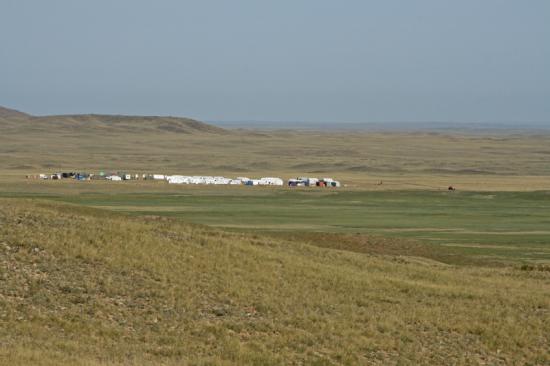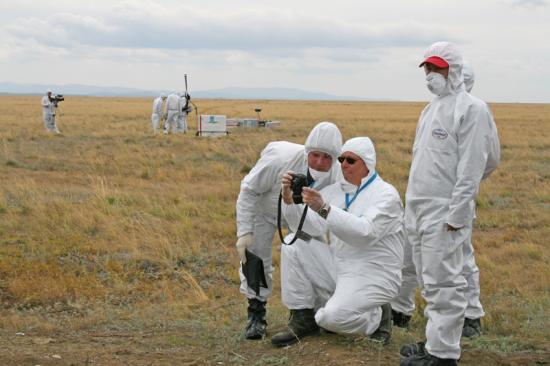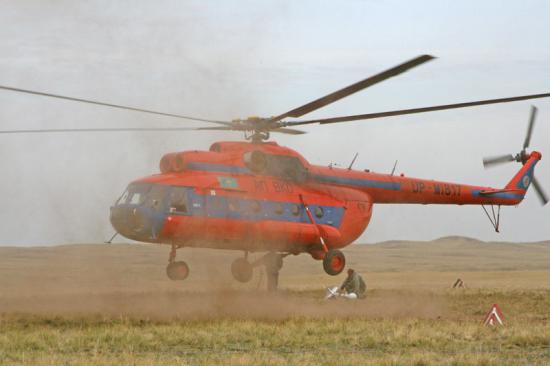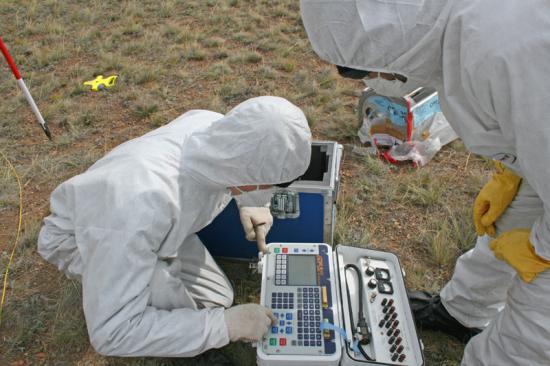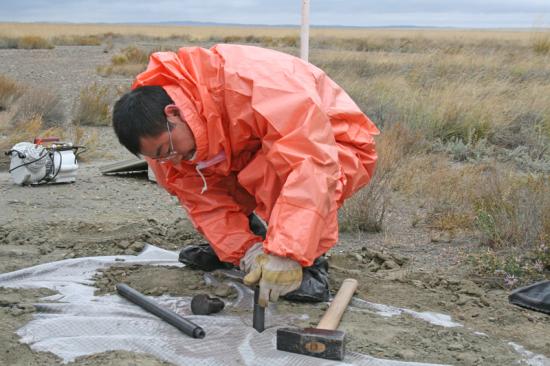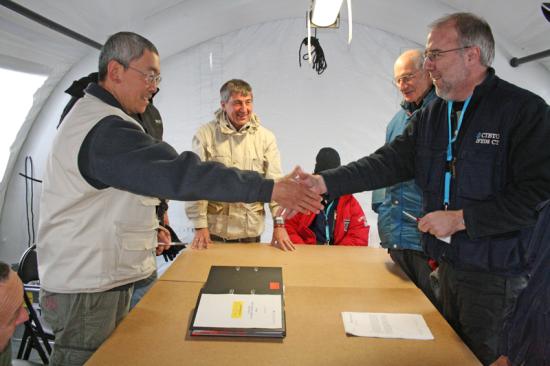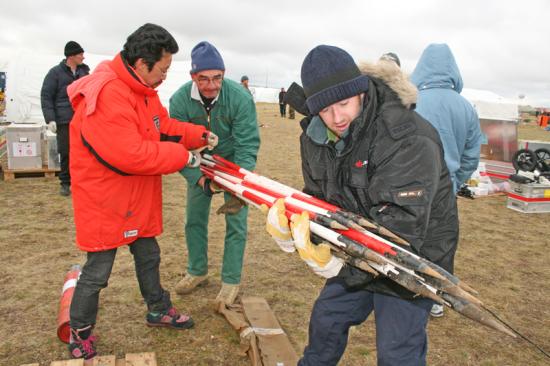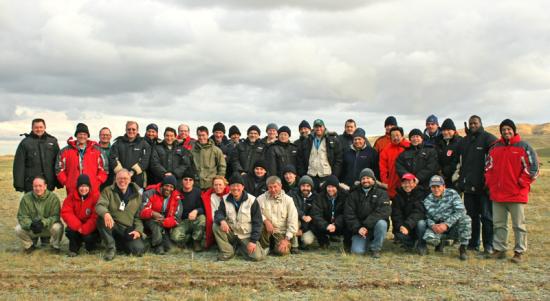Integrated Field Exercise 2008 (IFE08)
Autumn has arrived. The trees and shrubs that appear intermittently along the train tracks in the otherwise barren Kazakh steppe show off the colours of the season.
The train to Almaty, Kazakhstan, carries many international experts and scientists who have just completed one of the most ambitious projects in the history of nuclear disarmament. For over three weeks, the Preparatory Commission for the Comprehensive Nuclear-Test-Ban-Treaty Organization (CTBTO) ran its first ever Integrated Field Exercise for on-site inspections. The exercise took place at the former Soviet Union nuclear test site of Semipalatinsk in Kazakahstan, allowing the organization to test the readiness of its on-site inspection regime. On-site inspections are one of the key elements of a global alarm system to detect clandestine nuclear explosions worldwide.
To provide the exercise with a realistic setting for a possible violation of the Comprehensive Nuclear-Test-Ban Treaty (CTBT), the fictitious State of Arcania was invented. A seismic event of magnitude 4 accompanied by an inexplicable release of the radioactive substance Cesium 137 created the necessary backdrop. They could both have been caused by an underground nuclear explosion. International experts as well as CTBTO staff participated in the exercise, playing the roles of the CTBTO inspection team and representatives of Arcania.
Exercise ends without evidence of nuclear explosion
The weather in the northern Kazakh plain had once again turned unseasonably cold. Night temperatures dropped below freezing point as field activities of the Integrated Field Exercise 2008 (IFE08) came to a close on 24 September. In the three preceding weeks, the 49-people strong Inspection Team had searched the 1000 square kilometre inspection area thoroughly for evidence of an underground nuclear explosion. At no time were there more than 40 inspectors out in the field. Using a wide range of examination techniques, inspectors were unable to prove that a nuclear explosion had taken place. Instead, the suspicious data had most probably been caused by an earthquake, as claimed by Arcania.
First phase ended with need for continued inspection
The initial inspection period had ended on 12 September with no clear signs of a recent nuclear explosion. Inspection techniques such as visual observation, radiation monitoring, environmental sampling and seismic aftershock monitoring had been used. These techniques had enabled the inspection team to single out several areas that triggered their increased interest. Accordingly, the team requested for a continuation of the inspection.
More intrusive techniques during second inspection period
As foreseen by the Treaty, more intrusive techniques can be used during the second phase of the inspection, the so-called continuation period. Inspectors apply geophysical methods to find features of potential underground nuclear explosions that are not visible from the surface. “We are trying to use physics to see infrastructure or a cavity below the surface that may be evidence of an underground nuclear explosion,” said Matthew Purss, geophysicist and inspector in the exercise.
Geophysical techniques are time consuming and cover very limited areas. This is where the integration of inspection techniques assumes special importance. “We work in synergy with the other sub-teams of the inspection team: visual observation, seismic aftershock monitoring and radiation monitoring. Their findings help us to narrow down the search area,” explained Purss.
Different techniques to examine shallow and deep layers of the ground
The techniques applied during the exercise’s second phase included ground penetrating radar for the examination of the shallow subsurface layers down to about five metres. Magnetometry was also used during this phase. This entails measuring the Earth’s magnetic field and can be used to detect anomalies. During the exercise this technique was applied in two variants: ground-based with hand-held magnetometers, and air-borne with a so-called mag bird tied to a helicopter.
In order to survey the deeper layers several hundred metres below the Earth’s surface, inspectors used various electrical conductivity techniques. A set of electrodes were used to inject an electrical current into the ground for depths of up to one hundred metres. The responding signal was then measured by another set of electrodes. For depths of 500 metres and more, inspectors used artificially generated electro-magnetic fields to search for anomalies in the ground.
Inspectors identified evidence of older nuclear explosions
The inspectors did not find any evidence of a recent nuclear explosion. However, the application of geophysical techniques showed the effects of previous nuclear explosions that had been conducted at the site between 1949 and 1989. Geophysicist George Tuckwell, another member of the exercise inspection team, said that they could identify changes in the subsurface caused by previous underground nuclear explosions: “The physical properties of the ground are changed, as we could see for instance in the ground water systems.”
Continued use of first period techniques
Whilst the more intrusive geophysical inspection techniques were being used, the methods of the first inspection period continued to be applied. This illustrated clearly the integrated character of the exercise. Based on the daily findings, teams carried out targeted searches using several techniques: visual observation, seismic aftershock measuring and radiation monitoring.
First ever Argon sampling
For the first time in a field experiment, the inspection team conducted sub-soil air sampling to detect traces of the radioactive noble gas Argon 37. Unlike the noble gas Xenon, Argon 37 is not a direct product of a nuclear explosion. Matjaž Prah, the inspection’s sub-team leader for radionuclide techniques, explained that it would be created through the interaction of a nuclear explosion with the surrounding rock: "Argon 37 is not a natural radionuclide. It only appears when neutrons hit calcium. This is really something like a smoking gun."
Inspectors obtained samples of sub-soil air by drilling a one metre hole into the ground. The air was then pumped up and collected in large plastic bags. The air samples were brought back to the radionuclide field laboratory at the base of operation for further examination using the MADS, the Mobile Argon Detection System. This Argon detection system has been developed in China and can fit on a van or a small truck. It was tested for the first time under field conditions for OSI purposes during this exercise.
Preliminary report concludes exercise activities
The last field trips had now been completed. With temperatures having plummeted once again, inspectors huddled in their tents to prepare the first report, the Preliminary Findings Document. Information gathered during the exercise did not support the assumption that Arcania had conducted an underground nuclear explosion. All the usual tell-tale signs were absent, including the occurrence of relevant radioactive substances.
Before the official hand-over and signing of the report, the draft was shared with the representative of the inspected State Party Arcania for possible comments. Inspection team leader, Wang Jun of the CTBTO, explained the purpose of the document: "With this report we present our factual findings, the raw data. We as the inspection team do not give a definite judgment on the nature of the event."
In the same vein, the signing and counter-signing of the document by the inspection team leader and the representative of the inspected State Party does not constitute a judgment on the content of the report. “This is very much the acknowledgement of the content without the commitment of accepting or rejecting anything,” said Wang.
Game over
With the last signature on paper, the inspection simulation ended. The fictitious State of Arcania ceased to exist. It had served the purpose of putting the CTBTO on-site inspection regime to a stringent test under realistic and challenging conditions.
The simulation included role-playing in order to provide a realistic setting for the exercise. Participants had to work with the assumption that they were at a real inspection. The inspected State Party team was headed by John Walker, a disarmament expert from the United Kingdom. Walker’s team created several challenges for the inspection team. “It is important to provide a very difficult task for the inspectors to react to, to test them, so we can test the procedures and learn lessons on how to improve the manual and the SOPs (Standard Operating Procedures),” Walker explained.
Taking stock
The key phrase now is ‘lessons learned’. An exercise of this magnitude is bound to result in a long list of issues that need to be revisited when discussing guidelines for on-site inspections. “It is now time to take stock,” said inspection team leader Wang. “This exercise will take us a long way on issues such as techniques, equipment and procedure,” he added.
Wang’s assessment was shared by the CTBTO evaluators who believe that their exercise observations will stretch over several hundred pages. During the entire duration of the exercise, evaluators observed activities in the field and in the base of operations. They conducted interviews with participants in the various functions and carried out a thorough survey. Asked about the evaluators’ mandate, the evaluation team leader Paul Stokes said: “We observed the entire operation to see how well it went and where the gaps were.” CTBTO evaluator Javier Guarnizo added: “We provide feedback on the readiness of the on-site inspection regime on all levels: technical, managerial and logistical.”
Analysis process only just started
In the weeks and months to come, States Signatories and the CTBTO will revisit the exercise by sifting through the many reports, assessments and documents resulting from it. The analysis process has only just begun, but will help in the coming years to improve the on-site inspection regime. In a few years, yet another exercise will show how much has been learned from the lessons gained at the Integrated Field Exercise 2008 in Kazakhstan.
More proof of Treaty’s verifiability
Two years ago, key elements of the CTBTO’s global alarm system proved their verification capabilities when the Democratic People’s Republic of Korea declared that it had conducted a nuclear test. The Integrated Field Exercise 2008 provided yet further proof of the verifiability of the CTBT. It has shown that the final element of the CTBT verification regime, on-site inspections, will be a strong and reliable deterrent to potential violators of the ban on nuclear explosions once the Treaty enters into force.
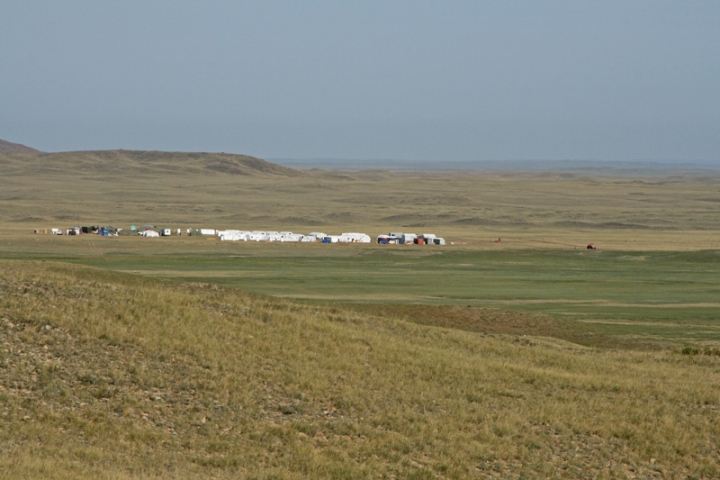
The CTBTO integrated on–site inspection exercise took place at the former Soviet Union nuclear test site Semipalatinsk.
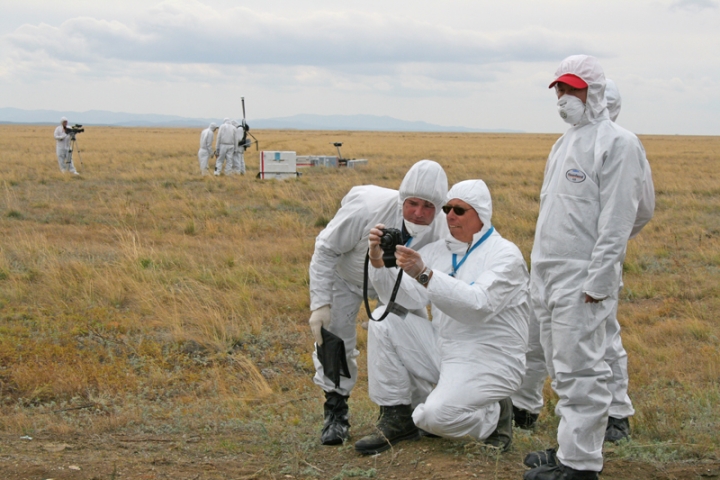
Visual observation was performed during the entire exercise.
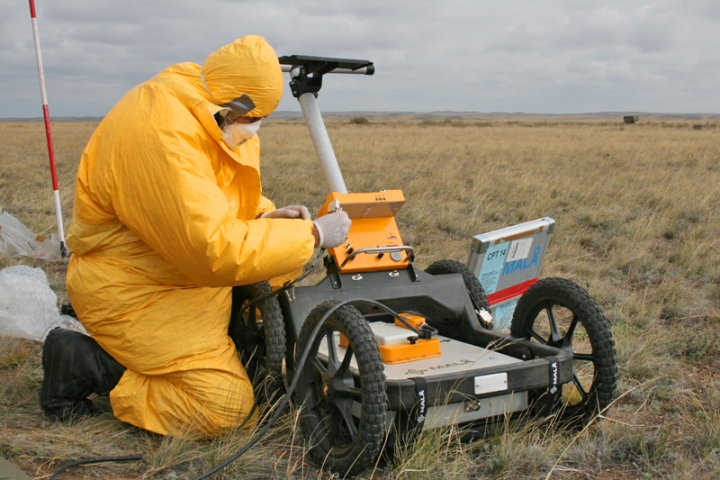
The ground penetrating radar is prepared for use during the second inspection period.
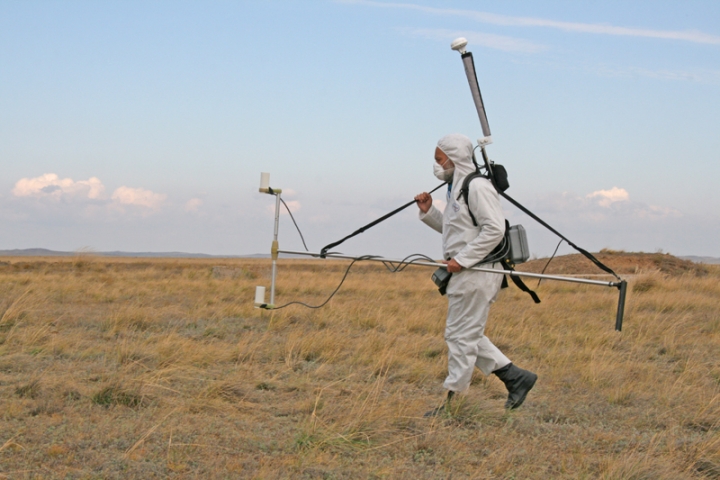
Hand-held magnetometers are used during the second inspection period.
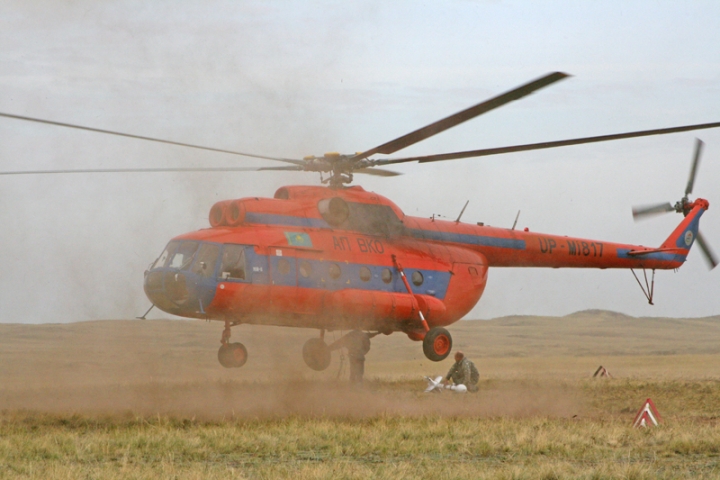
Magnetic field measurements for most of the inspection area are obtained with a so-called mag bird tied to a helicopter.
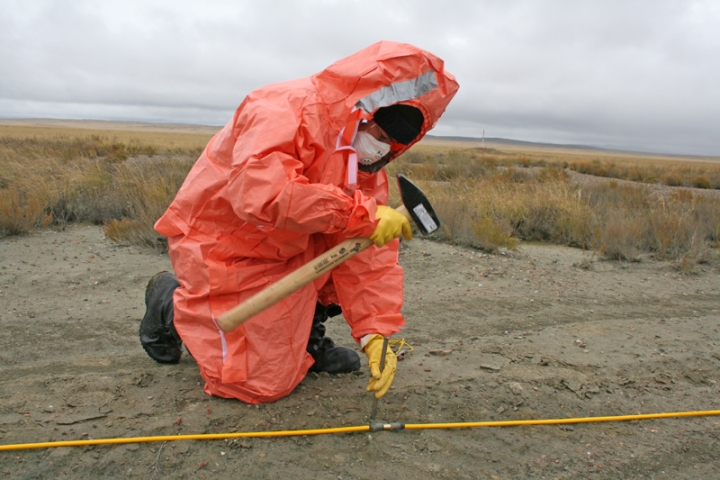
An inspector positions electrodes for shallow electrical conductivity measurements.
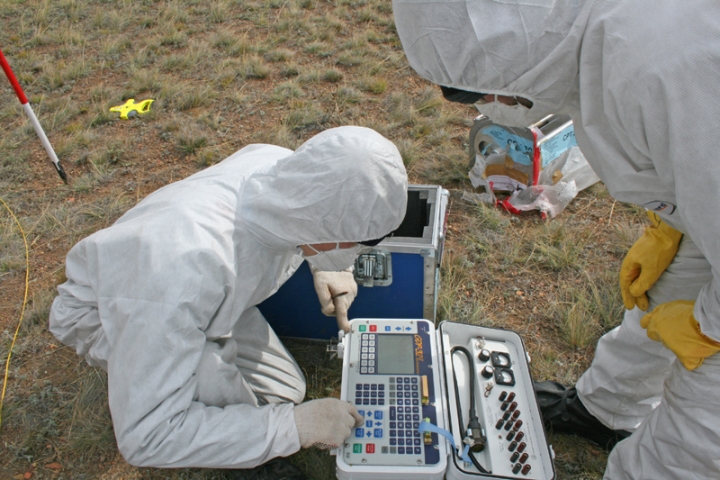
For measurements in greater depths, inspectors induce an artificial magnetic field.
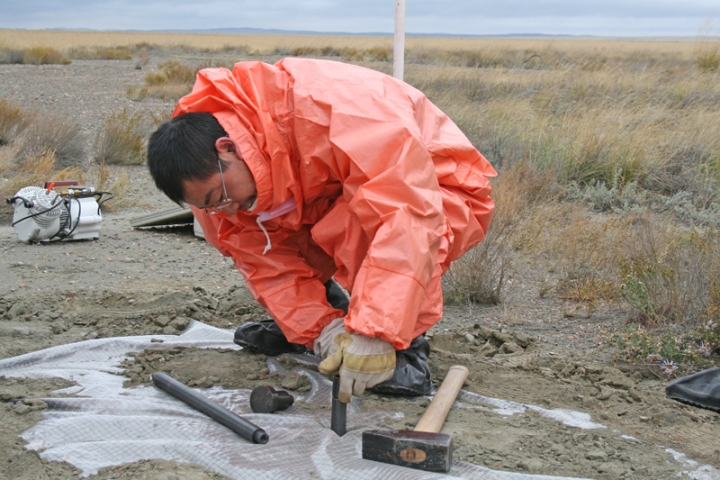
Air sampling for the detection of the noble gas Argon was performed for the first time.
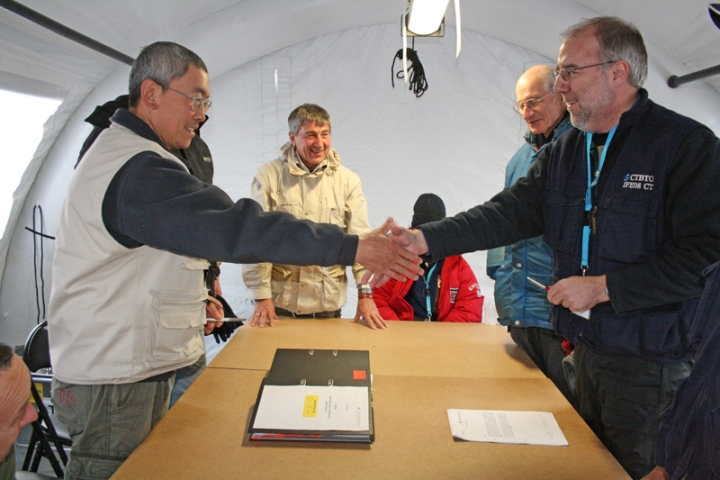
The hand-over of the preliminary findings marked the end of the inspection simulation.
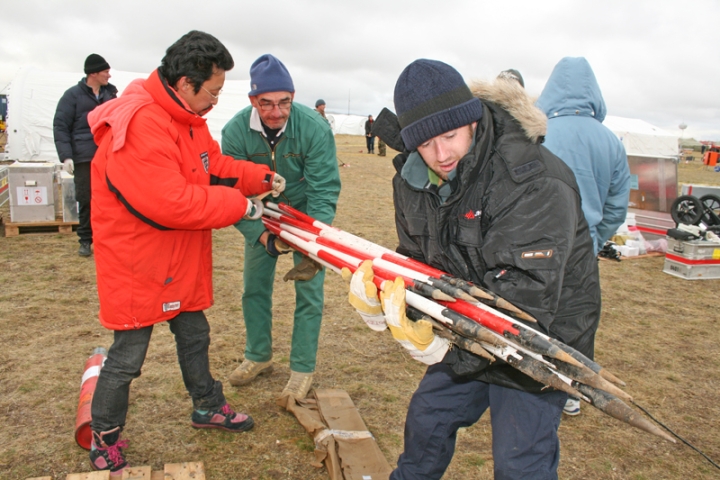
All exercise participants helped in taking down the camp.
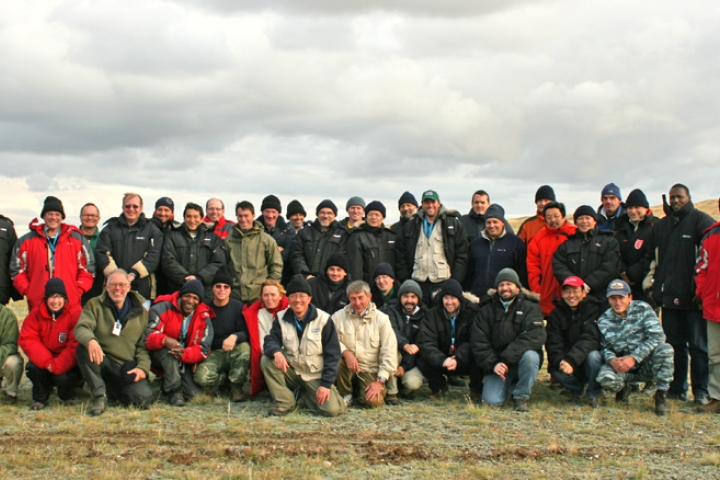
The IFE08 inspection team.
